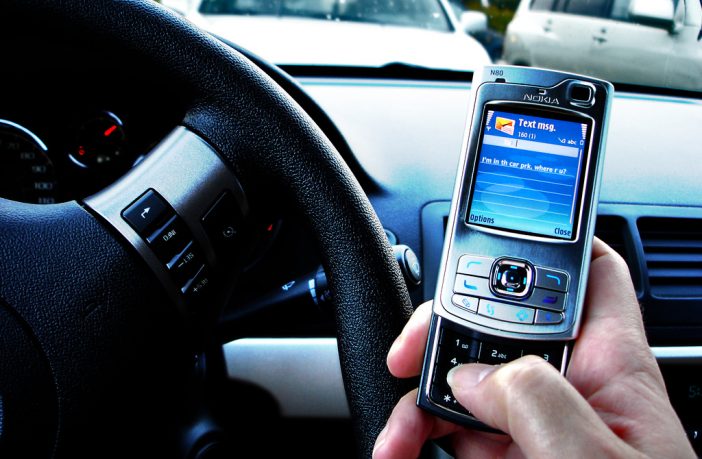Hands-free phones are often viewed as the solution to eliminating hazards while driving. They stop people holding onto a device and the steering wheel at the same time for a start. But new research, by psychologists at The Open University and the University of Sussex found that alarm bells should ring about these devices too. They found that driving while talking on a hands-free phone can be just as distracting as talking on a hand-held mobile phone.
The study, published in the Transportation Research journal, found that drivers having conversations which sparked their visual imagination detected fewer road hazards than those who didn’t. They also focused on a smaller area of the road ahead of them and failed to see hazards, even when they looked directly at them. This shows the risks of even hands-free phone conversations.
Competition for brain capacity
The research, carried out by a collaboration between Dr Gemma Briggs, Psychology Lecturer at the OU and Dr Graham Hole, Senior Lecturer in Psychology at the University of Sussex, found that conversations may use more of the brain’s visual processing resources than previously understood. Having a conversation which requires the driver to use their visual imagination creates competition for the brain’s processing capacity, which results in drivers missing road hazards that they might otherwise have spotted.
Dr Briggs said the research looked at data which reveals those on a hands-free phone are four times more likely to be involved in an accident and that this continues for five minutes after the call has ended.
“This competition for shared resources leads to decreased driving performance, to the extent that dual tasking drivers can look at but fail to see hazards even when they’re presented directly ahead of them. For those hazards which were detected, dual tasking participants took around twice as long to react to them than undistracted participants.”
We found conversations that required someone to create mental imagery were more distracting than conversations that did not.
We measured distractions in terms of the hazards people spotted and their reaction to them.
The study, which tracked eye movements, also found that drivers who were distracted suffered from “visual tunnelling”. They tended to focus their eyes on a small central region directly ahead of them. This led them to miss hazards in their peripheral vision. Undistracted participants’ eye movements ranged over a much wider area.
Dr Briggs said conversations with a passenger inside the car are qualatitively different because they have a shared environment with you.
“They can see what you can see and therefore they can regulate their conversation, dependent on your driving demands. They may even help you if something particularly demanding happens.
Someone on a mobile phone may not know that you are driving and therefore may consistently demand your attention.
The psychologists ran two experiments in which participants performed a video-based hazard-detection task. In the first experiment, participants were either undistracted, or distracted by listening to sentences and deciding whether they were true or false. For half of these distracted participants, the sentences encouraged the use of visual imagery (e.g. “a five pound note is the same size as a ten pound note”) whereas for the other half, the sentences did not (e.g. “Leap years have 366 days”).
Slower to respond
All of the distracted participants were slower to respond to hazards, detected fewer hazards and made more “looked but failed to see” errors, meaning their eyes focused on a hazard but they didn’t actually see it. These impairments were worse for the participants who were distracted by imagery-inducing statements.
In the second experiment, the researchers compared undistracted participants to ones who were distracted by a different visual imagery task. This involved mentally moving around an imaginary grid in response to verbal instructions. Distracted participants were more likely to miss hazards in their peripheral vision due to the “visual tunnelling.”
Imagery-inducing distraction leads to cognitive tunnelling and deteriorated driving performance is published in in the Transportation Research journal, authored by Gemma F Briggs (now at the Open University but conducted while at the University of Sussex), Graham J Hole and Michael F Land (University of Sussex).



